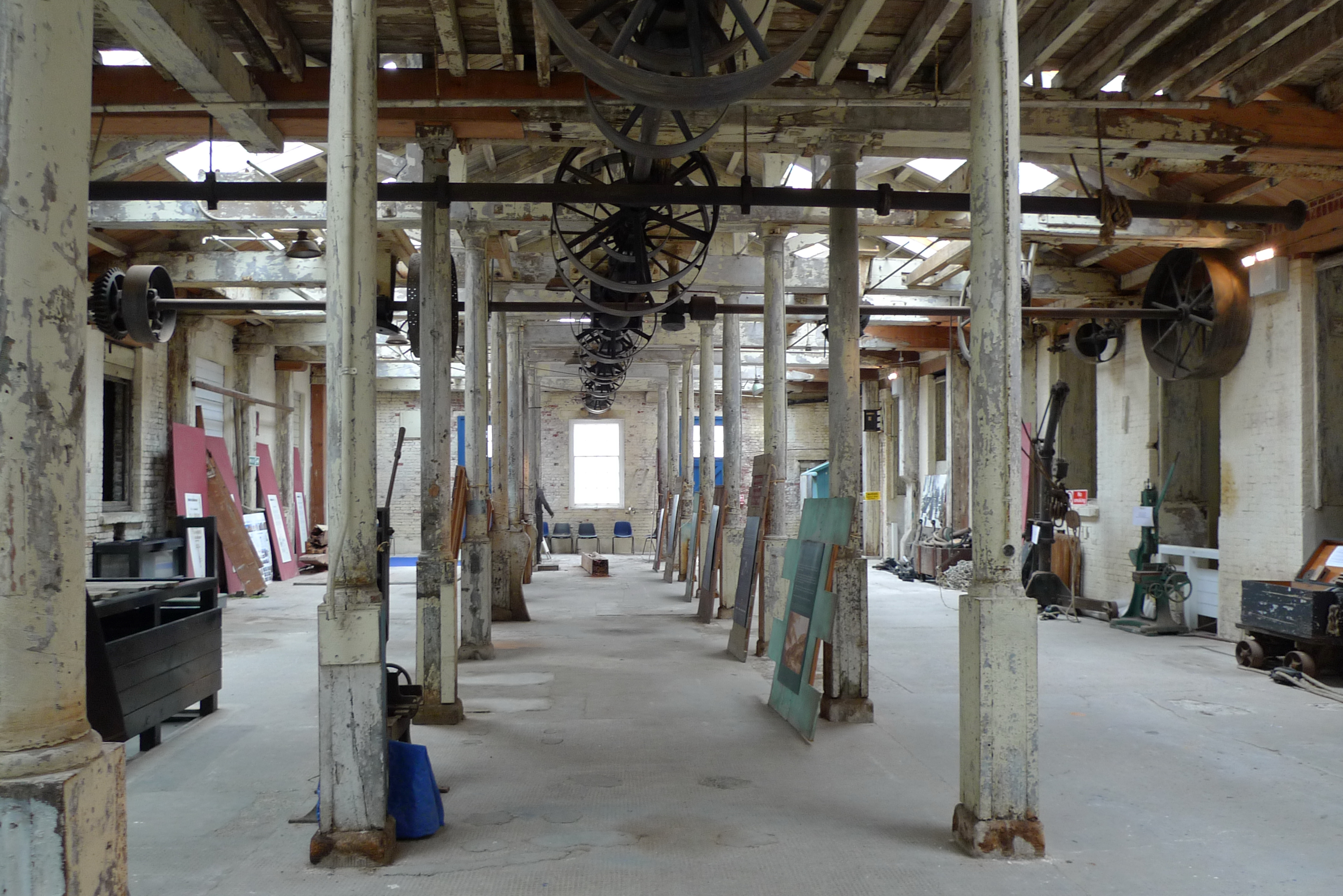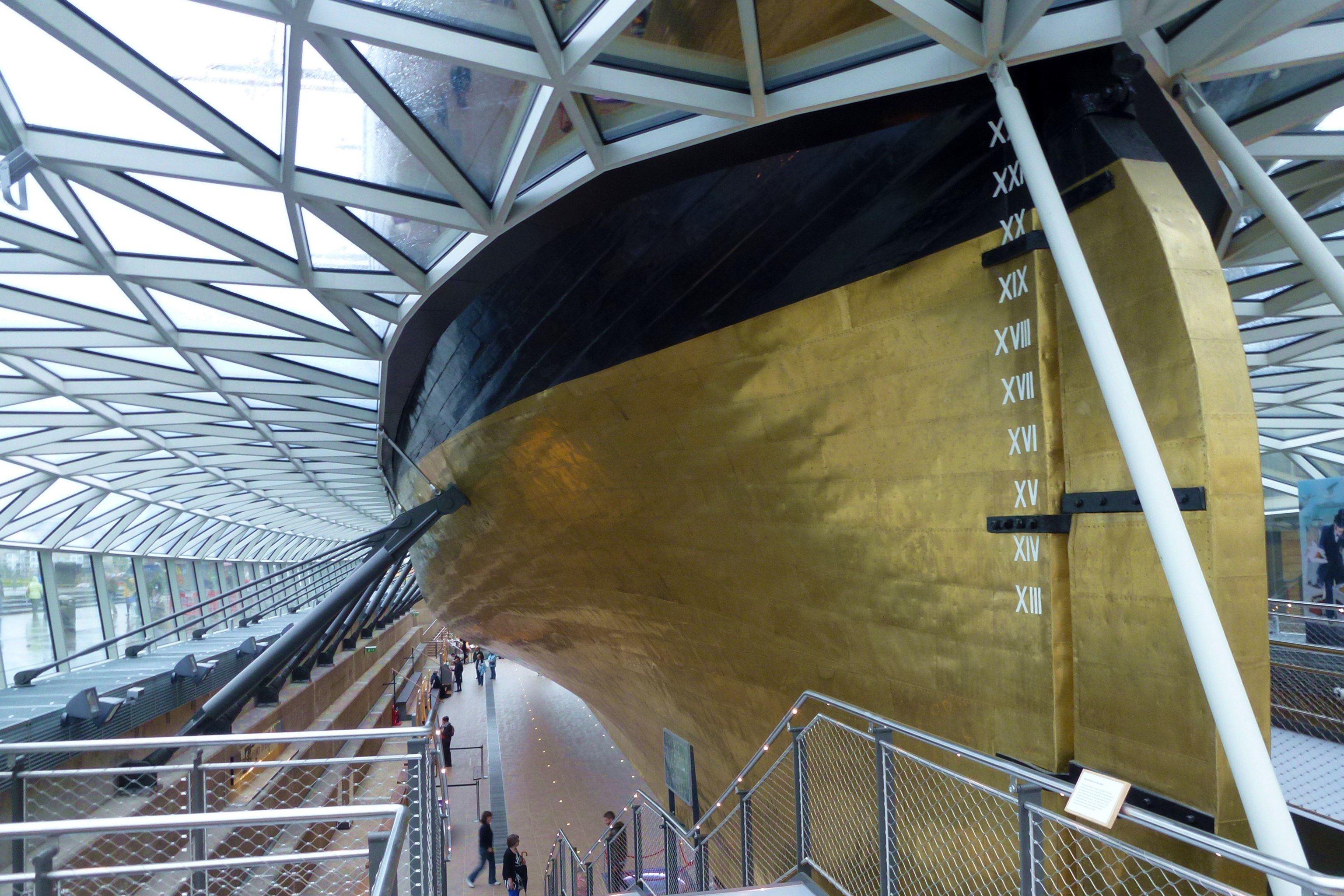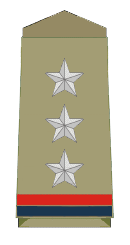|
Portsmouth Block Mills
The Portsmouth Block Mills form part of the Portsmouth Dockyard at Portsmouth, Hampshire, England, and were built during the Napoleonic Wars to supply the British Royal Navy with pulley blocks. They started the age of mass-production using all-metal machine tools and are regarded as one of the seminal buildings of the British Industrial Revolution. They are also the site of the first stationary steam engines used by the Admiralty. Since 2003 English Heritage has been undertaking a detailed survey of the buildings and the records relating to the machines. Development of Portsmouth Dockyard The Royal Navy had evolved with Britain's development by the middle of the eighteenth century into what has been described as the greatest industrial power in the western world. The Admiralty and Navy Board began a programme of modernisation of dockyards at Portsmouth and Plymouth such that by the start of the war with Revolutionary France they possessed the most up-to-date fleet facilities i ... [...More Info...] [...Related Items...] OR: [Wikipedia] [Google] [Baidu] |
Portsmouth Block Mills
The Portsmouth Block Mills form part of the Portsmouth Dockyard at Portsmouth, Hampshire, England, and were built during the Napoleonic Wars to supply the British Royal Navy with pulley blocks. They started the age of mass-production using all-metal machine tools and are regarded as one of the seminal buildings of the British Industrial Revolution. They are also the site of the first stationary steam engines used by the Admiralty. Since 2003 English Heritage has been undertaking a detailed survey of the buildings and the records relating to the machines. Development of Portsmouth Dockyard The Royal Navy had evolved with Britain's development by the middle of the eighteenth century into what has been described as the greatest industrial power in the western world. The Admiralty and Navy Board began a programme of modernisation of dockyards at Portsmouth and Plymouth such that by the start of the war with Revolutionary France they possessed the most up-to-date fleet facilities i ... [...More Info...] [...Related Items...] OR: [Wikipedia] [Google] [Baidu] |
Dock (maritime)
A dock (from Dutch ''dok'') is the area of water between or next to one or a group of human-made structures that are involved in the handling of boats or ships (usually on or near a shore) or such structures themselves. The exact meaning varies among different variants of the English language. "Dock" may also refer to a dockyard (also known as a shipyard) where the loading, unloading, building, or repairing of ships occurs. History The earliest known docks were those discovered in Wadi al-Jarf, an ancient Egyptian harbor, of Pharaoh Khufu, dating from c.2500 BC located on the Red Sea coast. Archaeologists also discovered anchors and storage jars near the site. A dock from Lothal in India dates from 2400 BC and was located away from the main current to avoid deposition of silt. Modern oceanographers have observed that the ancient Harappans must have possessed great knowledge relating to tides in order to build such a dock on the ever-shifting course of the Sabarmati, a ... [...More Info...] [...Related Items...] OR: [Wikipedia] [Google] [Baidu] |
Table Engine
A table engine is a variety of stationary steam engine where the cylinder is placed on top of a table-shaped base, the legs of which stand on the baseplate which locates the crankshaft bearings. The piston rod protrudes from the top of the cylinder and has fixed to it a cross-head which runs in slides attached to, and rising from, the cylinder top. Long return rods connect the crosshead to the crankshaft, on which is fixed the flywheel. This pattern of engine was first introduced by James Sadler at the Portsmouth Dockyard in 1798 and was house-built in that its framing was formed by the engine house, as had been common practice for beam engines. Henry Maudslay patented an improved version of this a few years later, and other makers adopted the configuration. It was supplied for low-speed, low-power applications around the first half of the nineteenth century. They continued to be made in a range of sizes, down to very small, with a bore and stroke of only a few inches. The tab ... [...More Info...] [...Related Items...] OR: [Wikipedia] [Google] [Baidu] |
James Sadler (balloonist)
James Sadler (February 1753 – 28 March 1828) was the first English balloonist, as well as a chemist and pastry chef. Life Sadler worked as a pastry chef in the family business, The Lemon Hall Refreshment House, a small shop in Oxford. Sadler was the second person to make a balloon ascent in England, very soon after the Tuscan Vincent Lunardi's flight on 15 September 1784 in the grounds of the Honourable Artillery Company at Moorfields. James Sadler was still the first English Aeronaut, making his ascent the following month, on 4 October 1784 from Christ Church Meadow, Oxford. The balloon rose to about and landed near Woodeaton, around away. Sadler's second ascent occurred on 12 November, this time in a hydrogen-filled balloon. It reached Aylesbury in Buckinghamshire after a twenty-minute flight. In May of the following year he took off near Moulsey Hurst, Surrey, accompanied by W. Wyndham MP, hoping to reach France, but in fact descending in the Thames Estuary, and t ... [...More Info...] [...Related Items...] OR: [Wikipedia] [Google] [Baidu] |
Copper Sheathing
Copper sheathing is the practice of protecting the under-water hull of a ship or boat from the corrosive effects of salt water and biofouling through the use of copper plates affixed to the outside of the hull. It was pioneered and developed by the Royal Navy during the 18th century. In antiquity, ancient Greeks used lead plates to protect the underwater hull. Development Deterioration of the hull of a wooden ship was a significant problem during the Age of Sail. Ships' hulls were under continuous attack by shipworm, barnacles and various marine weeds, all of which had some adverse effect on the ship, be it structurally, in the case of the worm, or affecting speed and handling in the case of the weeds. The most common methods of dealing with these problems were through the use of wood, and sometimes lead, sheathing. Expendable wood sheathing effectively provided a non-structural skin to the hull for the worm to attack, and could be easily replaced in dry dock at regular interva ... [...More Info...] [...Related Items...] OR: [Wikipedia] [Google] [Baidu] |
Rolling Mill
In metalworking, rolling is a metal forming process in which metal stock is passed through one or more pairs of rolls to reduce the thickness, to make the thickness uniform, and/or to impart a desired mechanical property. The concept is similar to the rolling of dough. Rolling is classified according to the temperature of the metal rolled. If the temperature of the metal is above its recrystallization temperature, then the process is known as hot rolling. If the temperature of the metal is below its recrystallization temperature, the process is known as cold rolling. In terms of usage, hot rolling processes more tonnage than any other manufacturing process, and cold rolling processes the most tonnage out of all cold working processes... Roll stands holding pairs of rolls are grouped together into rolling mills that can quickly process metal, typically steel, into products such as structural steel (I-beams, angle stock, channel stock), bar stock, and rails. Most steel mills ha ... [...More Info...] [...Related Items...] OR: [Wikipedia] [Google] [Baidu] |
Clerk (position)
A clerk is a white-collar worker who conducts general office tasks, or a worker who performs similar sales-related tasks in a retail environment. The responsibilities of clerical workers commonly include record keeping, filing, staffing service counters, screening callers, and other administrative tasks. History and etymology The word ''clerk'' is derived from the Latin ''clericus'' meaning "cleric" or "clergyman", which is the latinisation of the Greek ''κληρικός'' (''klērikos'') from a word meaning a "lot" (in the sense of drawing lots) and hence an "apportionment" or "area of land". Henry George Liddell, Robert Scott, "A Greek-English Lexicon", at Perseus The association derived from medieval courts, where writing was mainly entrusted to |
Chemists
A chemist (from Greek ''chēm(ía)'' alchemy; replacing ''chymist'' from Medieval Latin ''alchemist'') is a scientist trained in the study of chemistry. Chemists study the composition of matter and its properties. Chemists carefully describe the properties they study in terms of quantities, with detail on the level of molecules and their component atoms. Chemists carefully measure substance proportions, chemical reaction rates, and other chemical properties. In Commonwealth English, pharmacists are often called chemists. Chemists use their knowledge to learn the composition and properties of unfamiliar substances, as well as to reproduce and synthesize large quantities of useful naturally occurring substances and create new artificial substances and useful processes. Chemists may specialize in any number of subdisciplines of chemistry. Materials scientists and metallurgists share much of the same education and skills with chemists. The work of chemists is often related to the ... [...More Info...] [...Related Items...] OR: [Wikipedia] [Google] [Baidu] |
Architects
An architect is a person who plans, designs and oversees the construction of buildings. To practice architecture means to provide services in connection with the design of buildings and the space within the site surrounding the buildings that have human occupancy or use as their principal purpose. Etymologically, the term architect derives from the Latin ''architectus'', which derives from the Greek (''arkhi-'', chief + ''tekton'', builder), i.e., chief builder. The professional requirements for architects vary from place to place. An architect's decisions affect public safety, and thus the architect must undergo specialized training consisting of advanced education and a ''practicum'' (or internship) for practical experience to earn a license to practice architecture. Practical, technical, and academic requirements for becoming an architect vary by jurisdiction, though the formal study of architecture in academic institutions has played a pivotal role in the development of the ... [...More Info...] [...Related Items...] OR: [Wikipedia] [Google] [Baidu] |
Drafter
A drafter (also draughtsman / draughtswoman in British and Commonwealth English, draftsman / draftswoman or drafting technician in American and Canadian English) is an engineering technician who makes detailed technical drawings or plans for machinery, buildings, electronics, infrastructure, sections, etc. Drafters use computer software and manual sketches to convert the designs, plans, and layouts of engineers and architects into a set of technical drawings. Drafters operate as the supporting developers and sketch engineering designs and drawings from preliminary design concepts. Overview In the past, drafters sat at drawing boards and used pencils, pens, compasses, protractors, triangles, and other drafting devices to prepare a drawing by hand. From the 1980s through 1990s, board drawings were going out of style as the newly developed computer-aided design (CAD) system was released and was able to produce technical drawings at a faster pace. Many modern drafters now use co ... [...More Info...] [...Related Items...] OR: [Wikipedia] [Google] [Baidu] |
Engineers
Engineers, as practitioners of engineering, are professionals who invent, design, analyze, build and test machines, complex systems, structures, gadgets and materials to fulfill functional objectives and requirements while considering the limitations imposed by practicality, regulation, safety and cost. "Science is knowledge based on our observed facts and tested truths arranged in an orderly system that can be validated and communicated to other people. Engineering is the creative application of scientific principles used to plan, build, direct, guide, manage, or work on systems to maintain and improve our daily lives." The word ''engineer'' (Latin ) is derived from the Latin words ("to contrive, devise") and ("cleverness"). The foundational qualifications of an engineer typically include a four-year bachelor's degree in an engineering discipline, or in some jurisdictions, a master's degree in an engineering discipline plus four to six years of peer-reviewed professional pr ... [...More Info...] [...Related Items...] OR: [Wikipedia] [Google] [Baidu] |
Inspector General Of Naval Works
Inspector, also police inspector or inspector of police, is a police rank. The rank or position varies in seniority depending on the organization that uses it. Australia In Australian police forces, the rank of inspector is generally the next senior rank from senior sergeant and is less senior than a superintendent (in the cases of the Queensland Police and Western Australia Police) in the other Australian police forces. Members holding the rank usually wear an epaulette featuring three silver pips, the same rank badge as a captain in the army. In addition to the general rank of inspector, some police forces use other ranks such as detective inspector and district inspector. Austria In Austria a similar scheme was used as in Germany. At some point the police inspector was completely removed from the list of service ranks. The current police service has an inspectors service track with ''Inspektor'' being the entry level – it is followed by ''Revierinspektor'' (precinct ... [...More Info...] [...Related Items...] OR: [Wikipedia] [Google] [Baidu] |








